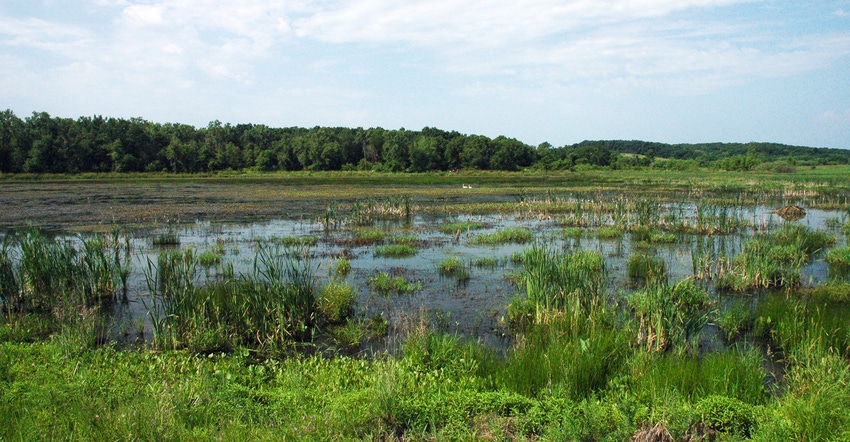June 1, 2017

USDA’s Natural Resources Conservation Service and Iowa Agricultural Mitigation Inc. announced May 24 that the first round of wetland mitigation credits is available to farmers seeking alternatives for their farmed wetlands.
“We have 38 credits available through our first bank site in Hancock County,” says Kim Perlstein, IAM executive director. “IAM is working with other landowners, with the goal of offering three additional wetland banks by the end of the year.”
Wetland mitigation banking uses a market-based approach to compensate for unavoidable impacts to wetlands in another location. Banked wetland mitigation credits are made available after the restoration, creation or enhancement of previously converted wetlands protected by a conservation easement.
Maintaining eligibility for USDA benefits
USDA conservation compliance requires any farmer who wishes to convert a wetland for commodity production to offset that loss through mitigation. This is required to maintain eligibility for USDA benefits, such as participation in the farm program.
IAM is one of 10 wetland mitigation banks that received $7 million in 2016 from NRCS to restore, create or enhance wetland ecosystems, and provides conservation options to farmers. The Iowa bank received $700,000 in NRCS funding to help cover administrative costs and to pay for engineering and marketing. No NRCS funds are used to purchase wetlands.
“Wetlands are vital to the health of Iowa’s ecosystems. When functioning properly, wetlands provide many environmental benefits including improving water quality, recharging groundwater, providing flood control, cycling nutrients and maintaining critical wildlife habitat,” says Kurt Simon, Iowa NRCS state conservationist.
For more information about purchasing wetland credits, go to iowamitgation.com. For more information about wetland compliance requirements, go to ia.nrcs.usda.gov or visit your local NRCS field office.
IAM is a nonprofit wetland mitigation bank. The bank provides compensatory mitigation credits for impacts to farmed wetlands within the identified bank service area. The goal of IAM is to provide an alternative, high-quality source of wetland mitigation credits in advance of their need for land improvement projects that result in impacts to farmed wetlands. The initial target area to be served includes the prairie pothole region of north-central Iowa. IAM is managed by a seven-member board of directors, including local government officials and natural resource professionals. It is an Iowa nonprofit corporation formed in 2010.
Johnson is public affairs specialist for Iowa NRCS, based in Des Moines.
About the Author(s)
You May Also Like




